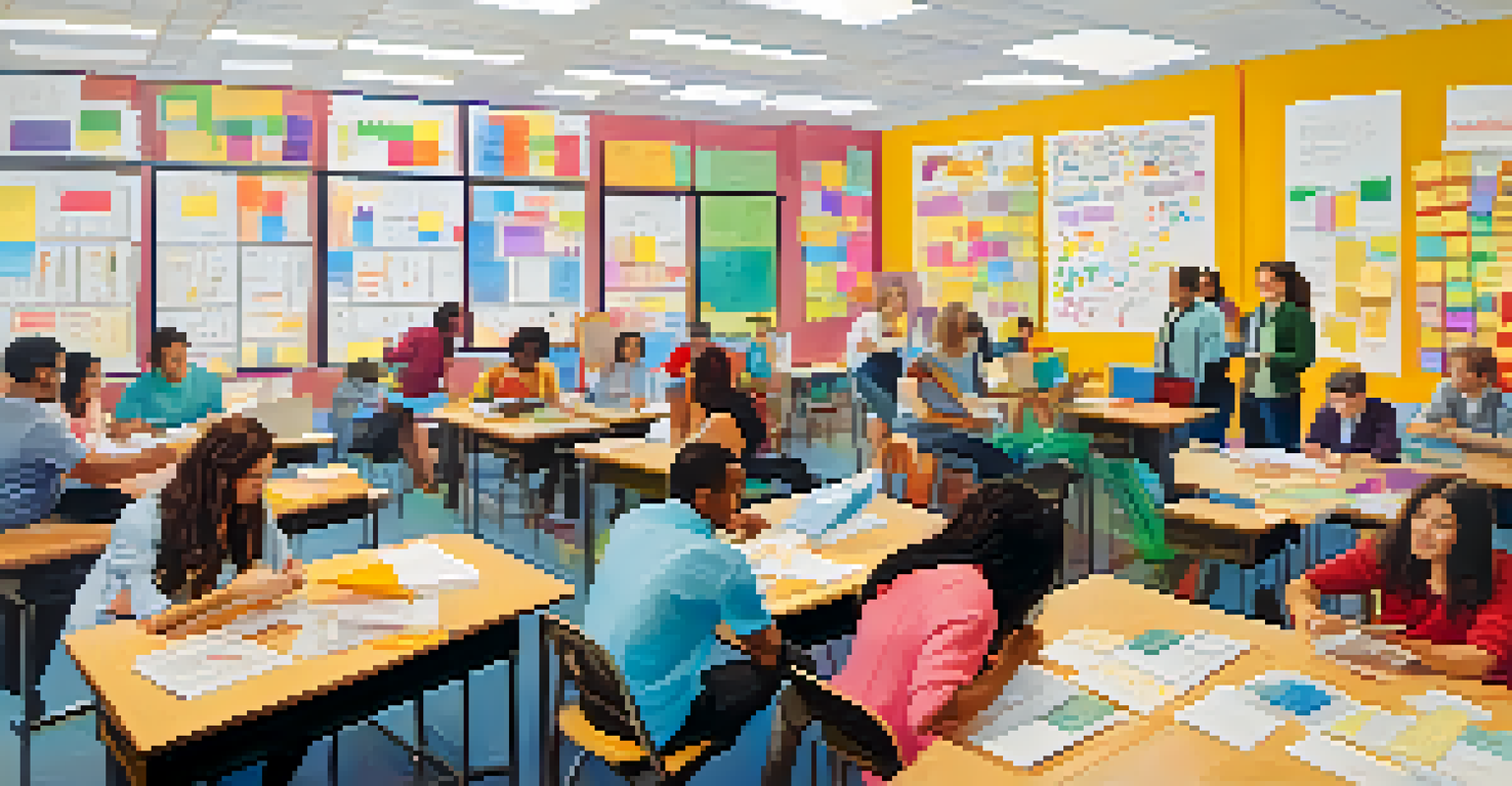Transformative Learning Theory: Changing Perspectives in Adults

Understanding Transformative Learning Theory Basics
Transformative Learning Theory is a framework developed by Jack Mezirow, focusing on how adults change their perspectives through critical reflection. It suggests that learning isn't just about acquiring new information but involves questioning and reassessing previously held beliefs. By engaging in this deep self-reflection, individuals can shift their worldview and approach to learning.
We do not learn from experience... we learn from reflecting on experience.
At its core, this theory emphasizes the importance of experiences in shaping our understanding. For instance, a person may have a transformative experience during travel that challenges their preconceived notions about a culture. Such moments compel individuals to reflect and rethink their beliefs, leading to profound personal growth.
Moreover, transformative learning is not a one-size-fits-all approach. Each person's journey is unique, influenced by their background, experiences, and context. This diversity makes the theory adaptable to different learning environments and individual needs, highlighting its relevance in adult education.
The Role of Critical Reflection in Learning
Critical reflection serves as the cornerstone of transformative learning. It involves examining one’s beliefs and assumptions in a structured way, allowing individuals to identify biases and limitations in their thinking. This process is akin to looking in a mirror that not only reflects your image but also reveals deeper truths about your beliefs.

For example, consider a professional who realizes that their approach to teamwork is exclusionary. Through critical reflection, they can confront this behavior, understand its impact on their colleagues, and make conscious efforts to change. This self-awareness fosters a more inclusive environment and enhances collaboration.
Transformative Learning Explained
Transformative Learning Theory emphasizes critical reflection and personal experiences as key drivers of adult learning and perspective shifts.
Engaging in critical reflection can be challenging, as it often requires confronting uncomfortable truths. However, this discomfort is a vital part of the learning process, leading to a more profound understanding of oneself and others. Thus, critical reflection becomes a transformative tool that can significantly enhance personal and professional growth.
Experiential Learning: A Catalyst for Change
Experiential learning is often described as 'learning by doing,' and it plays a crucial role in transformative learning. This type of learning encourages individuals to engage with real-life situations, providing a context for reflection and growth. Think of it as the difference between reading about swimming and actually jumping into the pool.
The greatest danger in times of turbulence is not the turbulence; it is to act with yesterday's logic.
For instance, a volunteer experience in a disadvantaged community can open one’s eyes to social inequalities. This firsthand exposure prompts reflection on one’s own privileges and responsibilities, potentially leading to a commitment to social change. The emotional impact of these experiences can be a powerful motivator for transformation.
Moreover, experiential learning fosters a sense of agency, empowering individuals to take control of their learning journey. When learners actively participate in their experiences, they are more likely to internalize lessons and apply them in future situations. This active engagement is essential for fostering lasting change in perspectives.
The Importance of Dialogue in Transformative Learning
Dialogue is another key component of transformative learning, as it facilitates meaningful exchanges that can challenge existing beliefs. Engaging in open discussions with others allows individuals to hear diverse perspectives and reconsider their own assumptions. It’s like a rich conversation over coffee that opens your mind to new ideas.
Participating in group discussions or workshops can create a safe space for this dialogue. For example, in a classroom setting, students sharing personal experiences related to a topic can lead to deeper understanding and empathy. Such interactions not only enrich learning but also build community among participants.
Role of Dialogue in Learning
Engaging in open dialogue allows individuals to challenge their beliefs and consider diverse perspectives, enhancing personal growth.
Moreover, constructive dialogue encourages critical questioning, which is vital for personal growth. By asking the right questions and exploring different viewpoints, individuals can navigate complex issues with greater clarity. This collaborative approach to learning fosters a sense of belonging and support, essential for transformative experiences.
Challenges and Barriers to Transformative Learning
While transformative learning offers numerous benefits, it also presents challenges and barriers that individuals may face. One common hurdle is the fear of change; many people resist altering long-held beliefs due to comfort or insecurity. This resistance can create a significant obstacle in the transformative learning process.
Additionally, societal and cultural norms can inhibit critical reflection and open dialogue. For instance, in environments where conformity is valued, questioning the status quo may be discouraged. This lack of support can stifle personal growth and limit opportunities for transformative experiences.
Overcoming these challenges requires a supportive learning environment that encourages exploration and vulnerability. Educators and facilitators play a crucial role in creating spaces where individuals feel safe to express their thoughts and feelings. By addressing these barriers, transformative learning can flourish, leading to meaningful change.
Real-Life Examples of Transformative Learning
Real-life examples can illuminate the principles of transformative learning in action. Consider a corporate leader who undergoes diversity training and realizes their unconscious biases. This experience prompts them to reflect on their leadership style and implement changes that foster inclusivity within their organization.
Another example is a retiree who takes up art classes after years in a corporate job. Initially hesitant, they discover a passion for self-expression through painting. This newfound interest not only enhances their creativity but also challenges their previously narrow perception of success, promoting a more fulfilling life.
Overcoming Learning Barriers
Addressing challenges like fear of change and societal norms is crucial to fostering a supportive environment for transformative learning.
These stories highlight how transformative learning can reshape identities and beliefs. They remind us that learning is a lifelong journey, and each experience can serve as a stepping stone toward greater understanding and personal evolution.
Applying Transformative Learning in Education
Transformative Learning Theory can significantly enhance educational practices, particularly in adult education settings. Educators can foster environments that promote critical reflection, dialogue, and experiential learning. For example, incorporating case studies or real-world problems can engage learners actively and encourage deeper exploration of the subject matter.
Additionally, creating opportunities for collaborative learning, such as group projects or peer discussions, allows for diverse perspectives to emerge. This collaborative approach not only enriches the learning experience but also cultivates a sense of community among learners. When individuals feel supported, they are more likely to take risks in their learning.

Ultimately, applying transformative learning principles can lead to more engaged and empowered learners. By prioritizing reflection and dialogue, educators can help students navigate their own transformative journeys, equipping them with the skills necessary for personal and professional success.